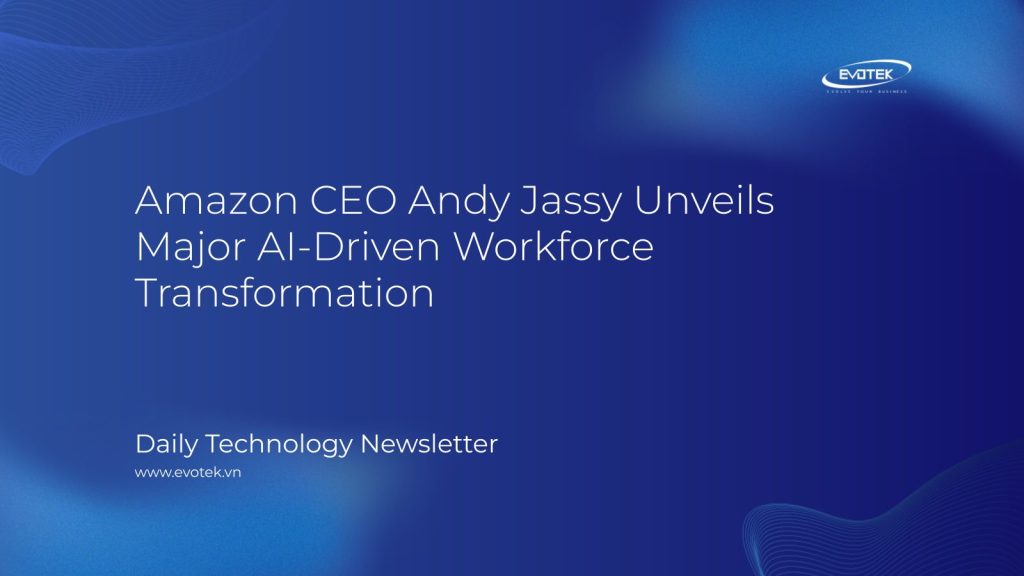Amazon’s leadership is charting a bold new course, with CEO Andy Jassy announcing a significant shift toward generative artificial intelligence (AI) and AI agents. This strategic move, communicated via an internal memo, signals a leaner corporate workforce in the coming years for the e-commerce giant, which currently employs approximately 1.5 million people worldwide, making it the second-largest private employer in the U.S.
“As we roll out more generative AI and agents, it should change the way our work is done,” Jassy stated in his memo. He further elaborated, “We will need fewer people doing some of the jobs that are being done today, and more people doing other types of jobs.”
These sophisticated AI “agents” are designed to act as digital workers, capable of handling a diverse range of tasks. This includes efficiently answering customer inquiries, providing personalized clothing size recommendations based on purchase history, and facilitating shopping through innovative features like “Buy for Me.”
The Implications of Amazon’s AI Evolution
While Amazon frames these AI tools as enablers for greater human creativity, allowing employees to focus less on “rote work” and more on “thinking strategically about how to improve customer experiences and invent new ones,” the announcement has sparked concerns among employees and environmental advocates alike.
According to reports, some Amazon software engineers describe an evolving work environment that has become “more routine, less thoughtful, and, crucially, much faster paced.” A prevailing fear among the workforce is the potential for job displacement as AI capabilities expand, raising anxieties about stable employment and financial security for families.
Beyond workforce concerns, the environmental footprint of these advanced AI tools is also under scrutiny. The operation of massive data centers required to power generative AI demands immense amounts of energy. Amazon’s data centers have been linked to significant planet-overheating pollution, particularly in regions like Virginia and Oregon, where residents have voiced concerns over high electricity consumption and increasing water scarcity. In 2021 alone, Amazon’s sustainability reports indicated the company released over 71 million metric tons of carbon pollution.
Addressing the Challenges: Amazon’s Efforts and Consumer Influence
In response to environmental criticisms, Amazon has implemented some changes aimed at reducing its ecological impact. These initiatives include the introduction of electric delivery vans to cut down on fuel emissions and a commitment to phase out plastic air pillows in packaging by the end of this year. However, these efforts are viewed by many as a small step against a considerably larger environmental challenge.
Experts suggest that consumers hold power in driving corporate responsibility. Supporting companies that prioritize renewable energy sources and ethical workplace practices can make a difference. Furthermore, simple individual actions contribute to the broader solution; using reusable shopping bags and powering down unused electronic devices helps reduce electricity demand, lessening the strain on energy-intensive data centers like Amazon’s. Educating oneself about greenwashing practices is also vital to discern genuine corporate sustainability efforts from misleading claims.
Andy Jassy concluded his memo by reiterating Amazon’s substantial investment in AI, emphasizing its rapid development: “many of these agents have yet to be built, but make no mistake, they’re coming, and coming fast.” This commitment underscores Amazon’s vision for a future increasingly shaped by artificial intelligence.

 日本語
日本語 한국어
한국어 Tiếng Việt
Tiếng Việt 简体中文
简体中文